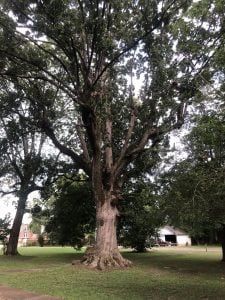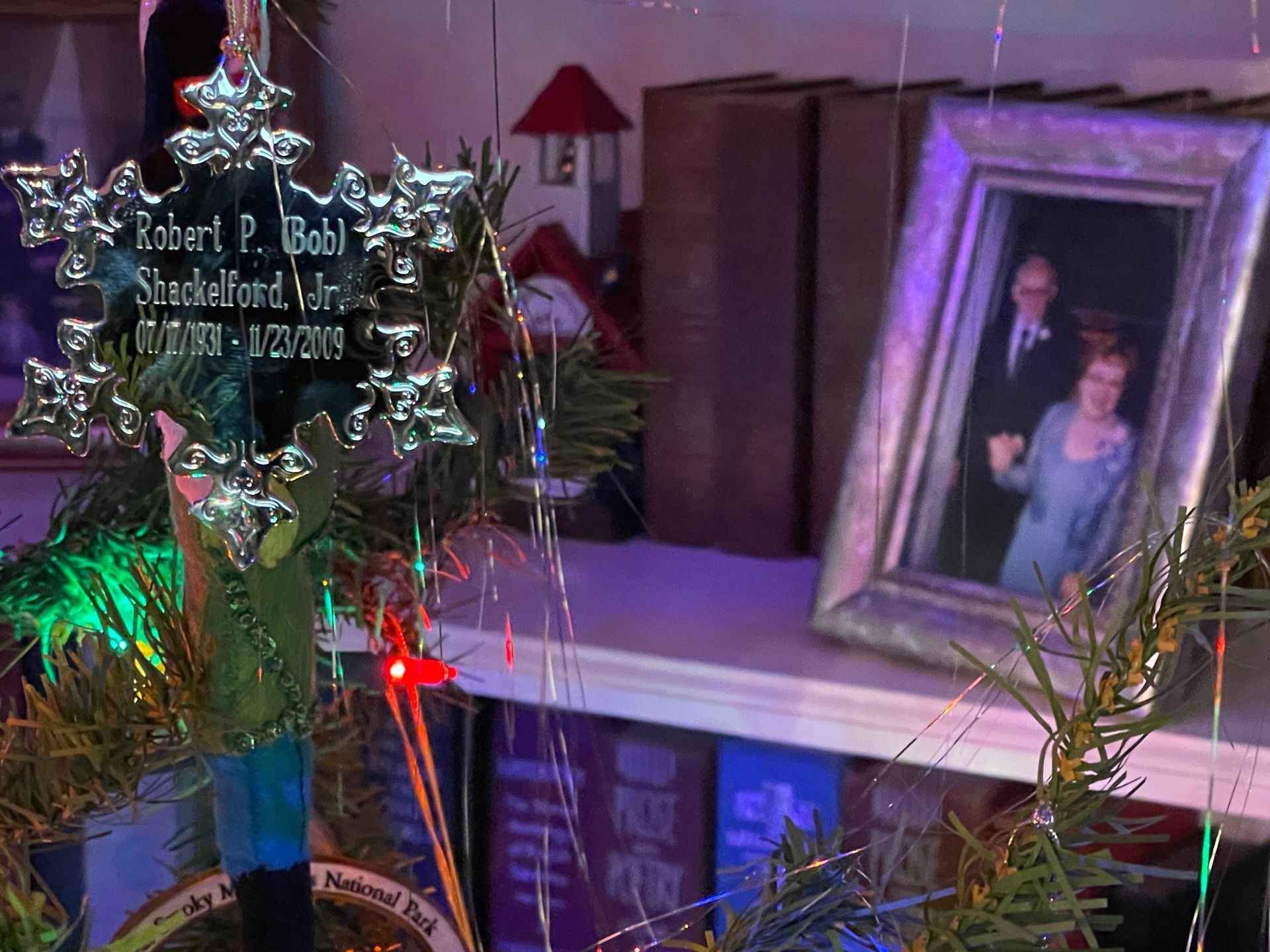Of Roots and Trees

Catty-cornered behind the funeral home in Savannah, across one back yard and into the front of another, there stands an oak tree. A Post Oak, to be exact. It is a massively beautiful tree, gnarled and scarred from years of living and sheltering and withstanding all that has afflicted it. You can see where over time it has yielded briefly to the storms, attempting to pacify Mother Nature with the offer of a branch when she might have been demanding so much more. And now from those ancient scars new life is sprouting, the smallest of stems reaching toward the sun. The roots supporting it make it difficult to actually reach the trunk, so great is their size—and given the expanse of the canopy, I can only begin to imagine the breadth and depth of the roots I cannot see that nourish this giant.
Over the years I had noted all of the above, but until this week I’d never given much thought as to the history of this magnificent specimen. It was a tree. It had been there for as long as I could remember . . . which in the overall scheme of things isn’t very long. But on Monday someone brought this ancient tree to my attention, and asked how old I thought it might be.
It’s an excellent question, and I only knew one way to definitively answer it. Cut the tree and count the rings—which is a terrible idea if it’s only meant to satisfy one’s curiosity. So we measured the circumference of the trunk and armed with that information I asked Google to expound upon calculating the age of a tree . . . without destroying it in the process.
It seems there is a way, after all, to estimate a tree’s age without exposing the growth rings. For those who might be interested, I shall outline the process. For those who are not, you can just skip the next paragraph and continue on.
To estimate a tree’s age, you take the circumference in inches (the distance around the trunk at about four and a half feet up) and divide it by pi (as in 3.14). This gives you the diameter (or the distance through the center) of the tree. Then you look up the growth factor for the particular species (which can be located on any number of websites on forestry—and which also means you have to actually know what kind of tree you have), then multiply the diameter by the growth factor to get the age of the tree in years. The circumference of the tree in question was over thirteen feet (think about that for just a minute . . .), so to be conservative I used an even thirteen, which is 156 inches. Divide that by 3.14 and you get a never-ending number which I rounded to 49.6815. Per the worldwide interweb, the growth factor for a Post Oak is 5. So, 5 times 49.6815 = 248.4075.
This tree is approximately 248 years old. To put that in perspective, when the North and the South were battling it out at Shiloh in 1862, this tree was already 90 years old. It started life as a single acorn . . . four years before our nation declared her independence in 1776.
It has endured storms and strife. It has survived the bitter cold of winter and the blistering heat of our southern summers. I’m sure in its earlier days children swung from its branches . . . and families still depend on it to provide shade and shelter for the house that now stands beneath its boughs. Through it all, this tree has stood, silently making the world a better place while asking nothing in return . . . except to be left alone so it might continue.
So what does any of that have to do with Death? Absolutely nothing, unless you understand that Loss and Grief are two of the most difficult adversaries we will ever be called upon to face, and as difficult as it will be, we can survive both. But there must be a willingness to bend when the storm becomes too great. We should be willing to entertain moments of happiness when we can and to give of ourselves when we encounter someone whose path is more difficult than our own. And we should always remember that even the coldest winter will give way to the awakening that comes with spring. Through it all, the depth of our roots will be the single greatest factor in how well we survive in this world. Maybe not in the quantity of our years, but most definitely in the quality.
About the author: Lisa Shackelford Thomas is a fourth generation member of a family that’s been in funeral service since 1926. She has been employed at Shackelford Funeral Directors in Savannah, Tennessee for over 40 years and currently serves as the manager there. Any opinions expressed here are hers and hers alone, and may or may not reflect the opinions of other Shackelford family members or staff.
The post Of Roots and Trees appeared first on Shackelford Funeral Directors | Blog.







A Year of Grief Support
Sign up for one year of weekly grief messages designed to provide strength and comfort during this challenging time.
Please wait
Verifying your email address
Please wait
Unsubscribing your email address
You have been unsubscribed
You will no longer receive messages from our email mailing list.
You have been subscribed
Your email address has successfully been added to our mailing list.
Something went wrong
There was an error verifying your email address. Please try again later, or re-subscribe.





